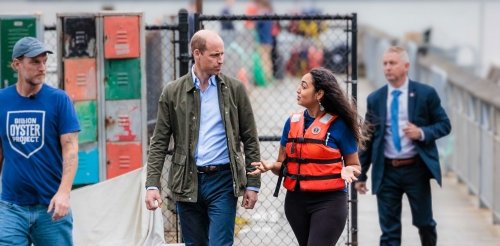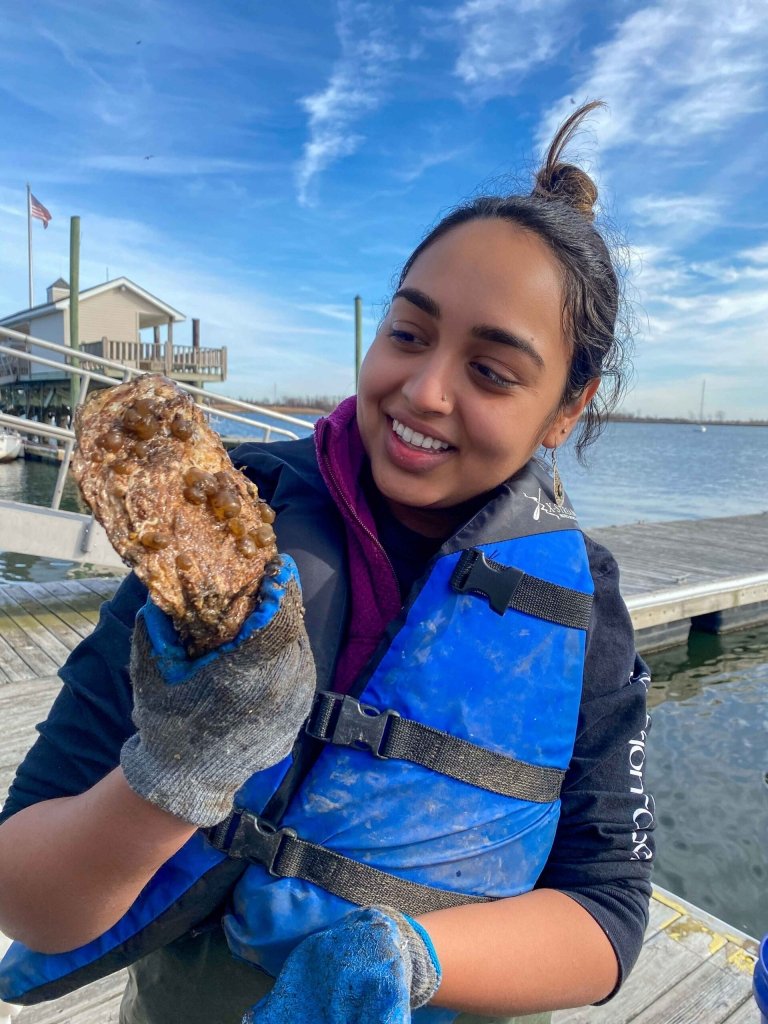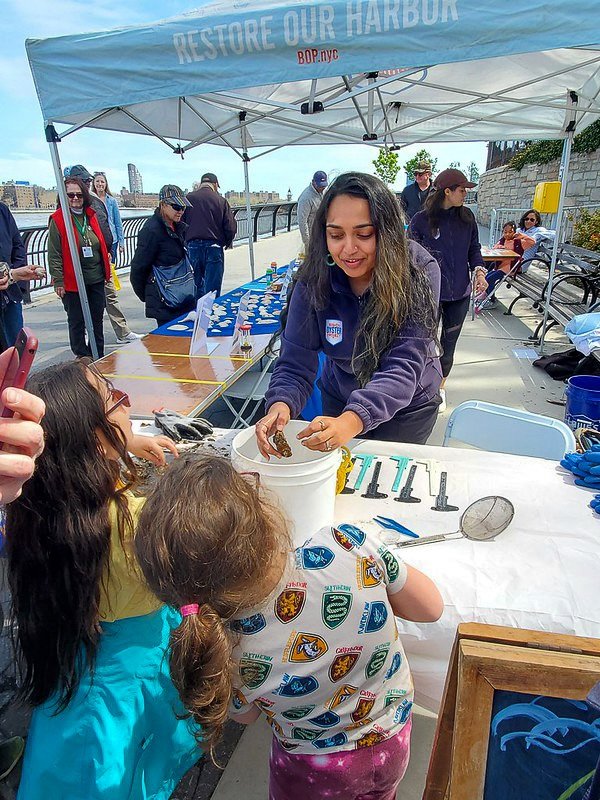Eco Awareness is Royally Important
An alum educates New York City school kids — and an unexpected visitor — about a harbor teeming with life.

By Tom Johnson
For Shinara Sunderlal ’17, protecting the environment is personal. In her work for the last two-and-a-half years as education outreach manager for the Billion Oyster Project, she’s spread the word to hundreds of New York City schoolkids about the nonprofit’s goal to reseed the harbor with oysters (that “billion” is no exaggeration) by 2035.
One of the people Sunderlal recently connected with wasn’t a New Yorker, but he evinced an intense interest in the Billion Oyster Project nonetheless—Britain’s Prince William. “I got looped in a couple of days before he visited. It was a visit I came to find out had been in the planning stages for two years,” Sunderlal said.
“In my case, it’s just getting students to realize that the harbor exists. Most students don’t think of it—that they live on an island. To let them know of all the life in the harbor and that it’s the healthiest it has been in decades is real-world stuff that they can take part in.”
–Shinara Sunderlal ’17
The prince regularly comes to New York City for the Earthshot Prize, which is a £1 million prize awarded each year to a deserving nonprofit.
“They stumbled across us because they wanted to visit a nonprofit as he was promoting the prize,” she said. The prince “came straight from the airport. Our boat picked him up at JFK and he got off at Governor’s Island in the harbor south of Manhattan. That’s where I received him.”
The prince spent about an hour on the island before being motored up the East River and over to Brooklyn Bridge Park. He was hardly in a spectator’s position; Sunderlal and her colleagues had the prince actually wade into the water to view the oyster reef.
“We put him in waders, and he explored the little critters with some middle-schoolers,” she said. “He left, and here’s the beautiful part: It started raining two seconds later. It had been raining all day and it broke just for him, for his visit.”

According to Sunderlal, just like for the prince, it all comes down to taking personal responsibility.
“There should be respect underscoring every action we take,” she said. “For me, that’s where I identified the biggest impact I could have. I love talking with people and personally showing them the beauty and wonders of the environment. It’s really about making a personal connection with the environment — that’s what ultimately will change behaviors.”
After majoring in environmental analysis with a focus on environmental policy and minoring in biology at Pitzer, Sunderlal went straight to grad school at New York University’s Steinhardt School of Culture, Education, and Human Development.
“The jobs I was getting out of college I was really overqualified for because I had already learned a great deal during my time at Pitzer,” she said. “The policy degree wasn’t giving me the recognition I needed in my field, so I ended up going to grad school, which was one-and-a-half years.”
Sunderlal’s first job after grad school was at Wildlife Conservation Society, a global nonprofit, followed by a stint at the New York Aquarium in Brooklyn. “It was pretty structured in the aquarium world,” she said. “They knew what they were doing getting people connected with the environment. I really learned a lot and changed my mind on how I felt about zoos and aquariums.”

Although Sunderlal said she hadn’t visited an aquarium since she was a child and only went for the interview, the job turned out to be a “lucky break.” “I was there through the pandemic, and I didn’t get laid off as most informal educators did during that period.” Soon after, she transitioned to the Billion Oyster Project.
In addition to restoring the vibrancy of New York Harbor’s oyster population, Sunderlal said the organization wants to connect with a million New Yorkers. “That’s where my job comes in,” she said. “I work with teachers and student audiences as communications manager and event coordinator, mostly K-12, but I also work with pre-K through grad school. My main focus is to train teachers and inspire them to get their students outdoors and figure out what they can be doing on the waterfront.”
New York Harbor was once the U.S. capital for oyster harvesting and was teeming with oyster beds. According to Sunderlal, the beds were functionally extinct until the reseeding began. The oysters are a viable keystone species here; they create reefs, which attract a multitude of positive impacts on the city.
“Oysters are very resilient,” she said. “Natural populations were found that we didn’t even reintroduce in places like the Gowanus Canal, which is a toxic superfund site, so go figure! As long as there is oxygen and food for them, oysters can survive even in high-nitrogen waters.”
“In my case, it’s just getting students to realize that the harbor exists,” she continued. “Most students don’t think of it — that they live on an island. To let them know of all the life in the harbor and that it’s the healthiest it has been in decades is real-world stuff that they can take part in.”
Looking back on the prince’s visit, Sunderlal said that reporters were everywhere and that she had never been remotely part of something like that.
“I was basically in charge of talking about our education work,” she said. “I think they gave me six minutes. The prince seemed like a very genuine guy and good at what he does. He was present and asked insightful questions. It really felt like he was listening. He’s also very tall and kind of loomed over me.”
Sunderlal said that her “walk and talk” with Prince William can serve as an object lesson for all of us in connecting with the environment.
“We all get caught up in life and sometimes forget to take pauses,” she said. “Just taking a 20-minute walk outside can affect decisions you might subsequently make for the betterment of our natural world.”
For Sunderlal and the rest of us, that just might be the pearl in the oyster.